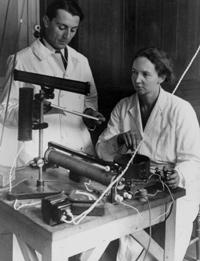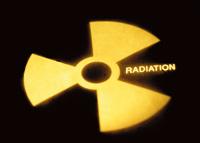Irene Joliot Curie

During the birth of Irene Joliot Curie the man discovered radioactivity. And not far from Irene, her parents, the prestigious physicists Pierre and Marie Curie, participated live in the discovery. In 1896, physicist Becquerel discovered the radioactive properties of uranium and, two years later, Irene's parents discovered other radioactive elements, radio, polonium and thorium.
Until then the atom was indivisible to man (the term atom means that in Greek, indivisible). But the discovery of radioactivity changed things. They observed that the nuclei of some atoms were unstable, so they emitted radiation, losing part of their mass.
On the way of the parents
The life of Irene Joliot Curie was forced by the environment, which was also immersed since childhood in the world of radioactivity. He was captured by World War I at the age of seventeen and in military hospitals he organized the mobile radiology service and trained the workers together with his mother.
After the war, in 1919, he began working with his mother at the Radio Institute. He also devoted himself to basic research and in 1925 presented the thesis on alpha particles of polonium, a type of radiation. That same year they met physicist Frederic Joliot and the following year they married. From there, as her parents, the young couple collaborated.
The marriage Joliot-Curie carried out numerous investigations and made a great discovery in one of them. They bombed thin sheets of aluminum with alpha particles emitted by polonium, and, to analyze the interaction of these particles with aluminum, measured the variation of the intensity of radiation on the other side of the aluminum foil. And they were hallucinated: although they stopped bombing with alpha particles, the radiation continued and saw that the intensity of that radiation decreased according to the exponential law. What was happening?
The duo Joliot-Curie achieved a radioactivity of artificial origin. Alpha particles cause the transformation of aluminum, resulting in a radioactive isotope of phosphorus.
The observed radiation was beta particles emitted by FOSFORO-30. Being the only atomic variant of nature the phosphore-31, an isotope was discovered that does not exist in nature. And not only that, but by completely disintegrating the 30 phosphorus, then they saw that silicon was produced. This discovery, by which radioactivity was artificially triggered, earned him the Nobel Prize in Chemistry in 1935.
Beginning of the nuclear era
The discovery of artificial radioactivity has been a major step forward for science. Artificial radioactivity laid the foundation for future treatments against cancer, the dating of objects and elements of nature, molecular biology and current genetics.

But not everything has been good. What's more, a lot has been wrong. The man soon built the nuclear weapons. And by chance use it: In 1945 the United States dropped atomic bombs on Hiroshima and Nagasaki. The disaster was huge. The radioactivity caused thousands of deaths and injuries that caused damage to the population that would last several generations.
And, unfortunately, the question did not end there. Real nuclear age II. It began with the end of the World War. The tension of the Cold War caused the world to enter the nuclear armory and man to make other weapons to destroy all humanity. Of course, scientists participated directly in this task.
However, others oppose, including the marriage Joliot-Curie. When France decided to build nuclear weapons, the pair held firm its opposition. Yes, the obstacle to the government's interests had consequences: They were expelled from their posts in the Atomic Energy Committee, director Frederic and responsible for the distribution of raw materials and research of uranium Irene.
Therefore, we might say that radioactivity decisively influenced the life of Irene Joliot Curie. He even influenced his death. Irene Joliot Curie died of leukemia in 1956, due to the accumulation of radiation suffered throughout her life.
Radioactivity Radioactivity

Three types of radiation are distinguished: alpha particles, beta particles and gamma rays. Alpha particles are helium nuclei formed by two protons and two neutrons, so their charge is positive. Beta particles are electrons. Gamma radiations are electromagnetic waves without mass or load.





